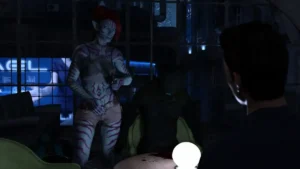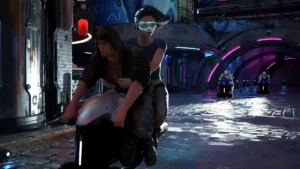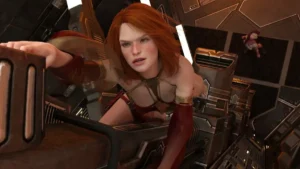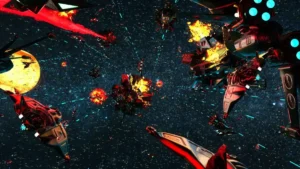
Callisto
Play Callisto
Callisto review
An in-depth look at Callisto’s controversial legacy
Callisto stands out as a game that sparked intense discussion for its bold approach to storytelling and mature themes. Known for its sci-fi horror atmosphere and controversial elements, Callisto has become a topic of curiosity for fans of boundary-pushing games. This article dives into what makes Callisto unique, exploring its gameplay mechanics, narrative choices, and the impact it has had on the gaming community. Whether you’re intrigued by its reputation or seeking a deeper understanding of its content, this guide covers everything you need to know about Callisto.
Understanding Callisto’s Gameplay and Themes
What Makes Callisto Different?
Let me be honest with you—the first time I booted up Callisto, I thought I knew exactly what I was in for. Another sci-fi horror shooter, right? 🤖 I was so, so wrong. Within the first hour, I realized this wasn’t just another corridor-crawler; it was a brutal, intimate dance with death that grabbed me by the throat and refused to let go. The core Callisto gameplay is a masterclass in deliberate, weighty combat. This isn’t about running and gunning; it’s a strategic, third-person brawl where every swing of your stun baton and every dodge feels consequential.
What truly sets it apart is the GRP system. Instead of just another gun, you get a gravity glove that lets you hurl enemies into environmental hazards. I’ll never forget the first time I grabbed a charging creature and launched it into a spinning fan blade—it was both horrifying and incredibly satisfying. 🌀 This mechanic forces you to constantly scan your environment, turning the entire prison into your weapon. The Callisto gameplay loop is a tense cycle of melee combos, timely dodges, and strategic GRP throws that makes you feel powerful yet perpetually vulnerable.
The commitment to a grounded, third-person perspective is key. You’re not a detached camera; you are Jacob Lee, and you feel every gut-wrenching blow. The camera stays tight on your shoulder, making the horrors feel immediate and inescapable. This physicality is central to the Callisto gameplay experience.
To see how these elements stack up against other titles in the genre, let’s break it down:
| Feature | Callisto | Typical Sci-Fi Horror |
|---|---|---|
| Core Combat | Weighty, strategic melee focused | Often faster, gunplay dominant |
| Unique Mechanic | GRP (Gravity) System for environmental kills | Stealth, hacking, or crafting |
| Perspective & Immersion | Intimate, over-the-shoulder third-person | First-person or more detached third-person |
| Player Power Fantasy | Empowering but resource-intensive brutality | Often leans toward pure empowerment or pure helplessness |
Exploring the Sci-Fi Horror Elements 🪐
If you’re a fan of the genre, you know that Callisto sci-fi horror doesn’t just use its setting as a backdrop—it makes the setting the antagonist. Black Iron Prison is a character in itself, a cold, metallic tomb orbiting Jupiter. The Callisto atmosphere is so thick you could cut it with a knife, a chilling blend of industrial claustrophobia and the silent, infinite dread of space. I remember moments where I’d just stop, listening to the creaking of the station and the distant, inhuman shrieks, my heart pounding in my chest. It’s a feeling of isolation that few games achieve.
This is where the Callisto enemy design truly shines. The Biophages aren’t just generic zombies; they are former inmates and guards, their bodies horrifically mutated. The design is visceral and biological, with exposed muscle and bone, making each encounter deeply unsettling. 🦴 You’re not just fighting monsters; you’re fighting the grotesque remains of people, which adds a layer of tragic horror that pure aliens or demons can’t replicate.
The Callisto sci-fi horror experience is amplified by a soundscape that is nothing short of award-worthy. The audio design had me jumping at shadows, with every drip of water and distant thud feeding my paranoia. The Callisto atmosphere is a slow-burn terror, built on a foundation of impeccable art direction and sound that preys on your fear of the dark and the unknown.
Pro Tip: Play with headphones. The 3D audio is not a gimmick; it’s essential for fully immersing yourself in the terrifying Callisto sci-fi horror soundscape and locating threats before you see them. 🎧
Controversial Content and Player Reactions 💥
Now, let’s talk about the elephant in the room. Callisto is not for the faint of heart, and its dedication to Callisto mature themes is a primary reason it sparked such divided opinions. This game delves into Callisto controversial content with a unflinching gaze, exploring heavy subjects like corporate corruption, the ethics of incarceration, and bodily autonomy gone horrifically wrong.
The Callisto narrative doesn’t shy away from its bleakness. I recall a specific story beat involving a character’s forced transformation that was genuinely hard to watch. It’s this kind of content that had some players and critics labeling the game as excessively grim or even exploitative. The level of graphic body horror and the pervasive sense of despair proved to be a major point of contention. Some felt it was powerful and necessary for the story, while others found it to be misery for misery’s sake.
The Callisto mature themes are woven directly into the Callisto gameplay. The brutal melee kills, while cathartic, are incredibly violent. You are literally pulverizing mutated human beings. This created a fascinating dissonance for me—I needed to be violent to survive, but the violence itself was horrifying. This intentional discomfort is a core part of the Callisto controversial content. It forces you to engage with the ugliness of your situation, making you complicit in the cycle of violence.
So, why did the Callisto narrative resonate so strongly with some and push others away?
- For some players, the bleakness was a strength. It created a cohesive, unforgettable tone where hope was a rare and precious commodity.
- For others, the relentless grimdark felt exhausting. They craved more narrative light and shade, or found the themes too heavy-handed.
- The graphic nature of the Callisto mature themes was a barrier for many who are sensitive to intense body horror and psychological distress.
Ultimately, the legacy of Callisto is defined by its bravery. It’s a game that knew what it wanted to be—a brutal, atmospheric, and thematically dense sci-fi horror experience—and it committed to that vision without apology. It pushed boundaries in its gameplay, its atmosphere, and its willingness to explore dark mature themes, ensuring that whether you loved it or hated it, you certainly wouldn’t forget it.
Callisto remains a game that challenges conventions and invites conversation about the role of mature themes in gaming. Its blend of sci-fi horror and controversial content has left a lasting impression on those who have experienced it. Whether you appreciate its bold storytelling or question its approach, Callisto undeniably stands as a unique entry in the world of adult-oriented games. For anyone curious about its legacy, Callisto offers a thought-provoking journey worth exploring.











